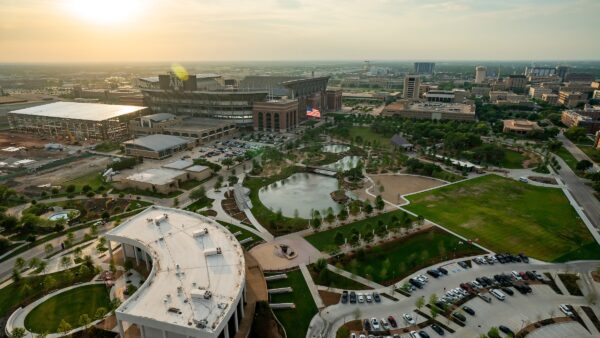
Getting To The Roots Of Aggie Park’s Trees
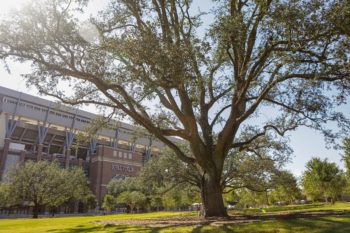
Walking among the trees of the newly unveiled Aggie Park, you could be forgiven for thinking that most of them had been growing there for years.
That’s by design, says Association of Former Students Vice President Marty Holmes ’87. In addition to the trees that were there before construction began, The Association brought in more than 600 additional mature trees to create a shady canopy of foliage over much of the new park’s paths and gathering spaces.
The results speak for themselves: From the cypress trees hugging the banks of the fishing pond to the proud oaks of the park’s central grove, the sheer number and variety of trees makes them a sight to behold. And for amateur arborists in the know, the trees of Aggie Park hold plenty of interesting stories and connections to Texas A&M lore.
By The Numbers
In total, Aggie Park is now home to 634 trees of various species. Over 100 of those are live oaks — the same tree whose leaves appear in the iconic design of the Aggie Ring. Tucked away among some of those oaks is a lone pecan tree, the official state tree of Texas. And for some extra Aggie flair, there are just over 130 burgundy elms, whose leaves will soon turn a deep maroon as temperatures drop this fall.
Other species found in the park include eastern red cedars, American sycamores and additional varieties of oak, such as water oaks and willow oaks.
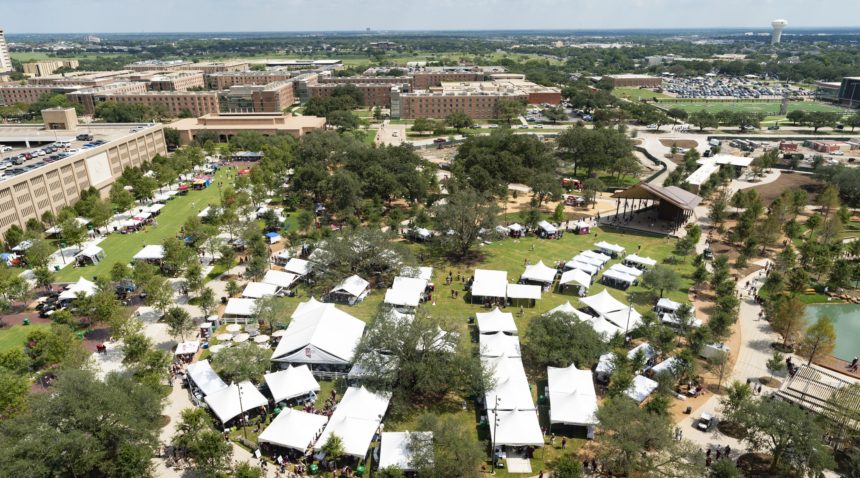
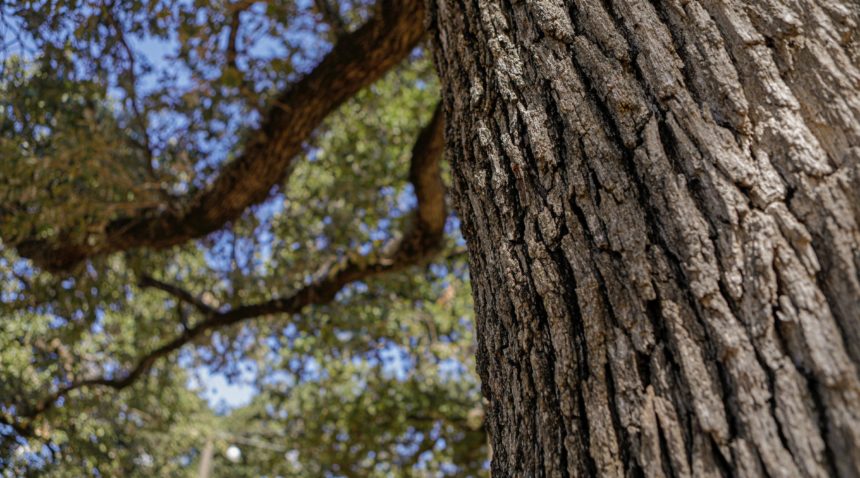
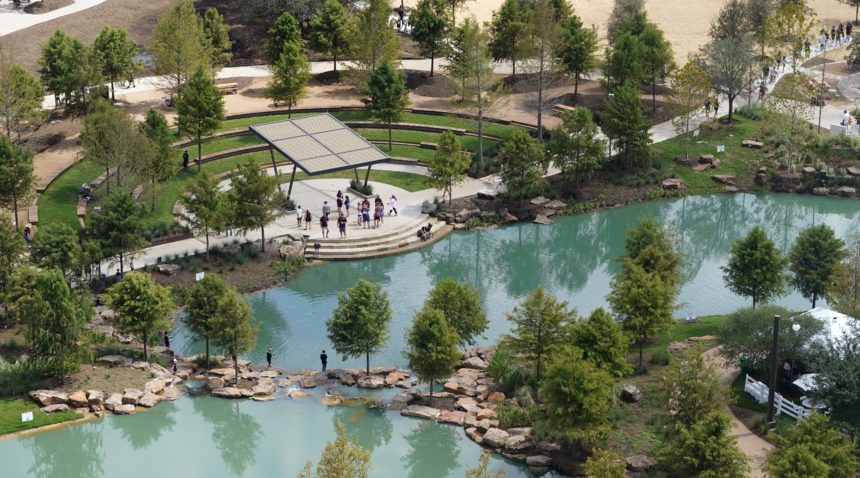
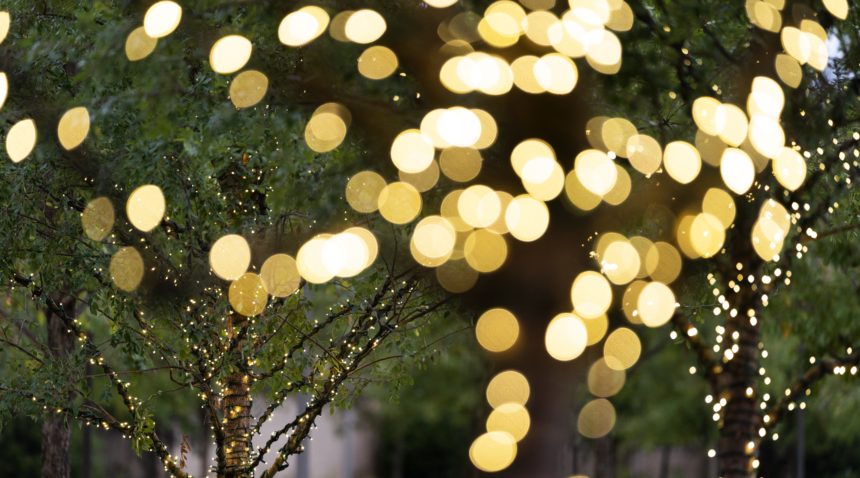
Trees On The Move
Upon their first walk through Aggie Park, longtime visitors to campus may notice familiar trees in some unfamiliar places. During construction, around 12 of the space’s original trees were carefully moved to new permanent homes in the park.
For the larger trees, Aggie-owned company Environmental Design, Inc., used its unique ArborLift process, in which a tree and its root system are rolled across the ground on a series of inflatable bladders. This time-lapse video shows the process in action as crews move a 100-plus-year-old live oak to a new spot in Aggie Park:
The Rudder Oak
Of the trees that were moved during the park’s construction, one in particular holds a special place in Aggie history. When legendary Texas A&M President Gen. James Earl Rudder died in 1970, the Aggie Women’s Club planted a tree near the President’s House in his honor. More than 50 years later, the sturdy oak has a new home in the heart of Aggie Park.
The walkway surrounding the Rudder Oak is made up of bricks from the now-demolished house, which served as an on-campus residence for Rudder and many later university presidents before being torn down as part of the park project.
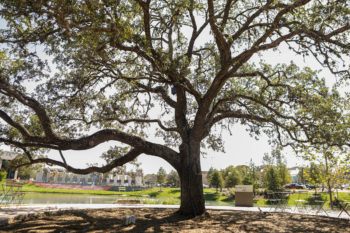
A Sweet New Purpose
Though some trees had to be cut down during the construction process, they’ve still found an important role in the new park. Visitors to the Moore Family Creamery in the middle of the park can sit and eat their ice cream at a wooden counter made from a few trunks of those fallen trees.
Additional salvaged wood will eventually be made into handrails and other useful elements for The Association’s new building to be constructed on the south end of the park.
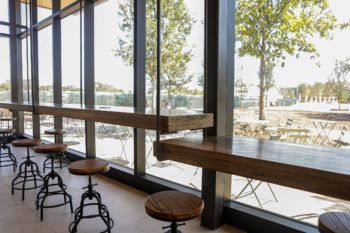
Auspicious Offspring
As additional construction continues, Aggie Park will soon welcome three new live oaks with some big shoes to fill — all three are children of Texas A&M’s Century Tree, one of the oldest and largest trees on campus, and by far the most famous.
The five-to-six-year-old offspring of the legendary oak were originally cultivated by the late Andy Duffie ’78, who grew and sold hundreds of baby Century Trees to raise money for scholarships and campus programs through the Aggie Century Tree Project.
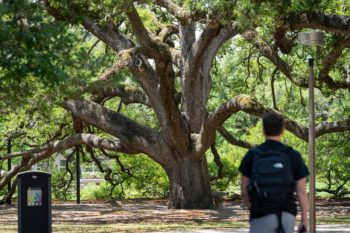
Media contact: Luke Henkhaus, luke.henkhaus@tamu.edu

